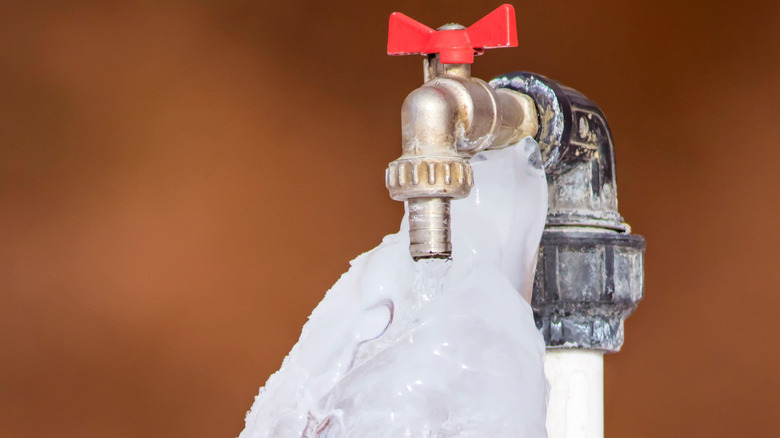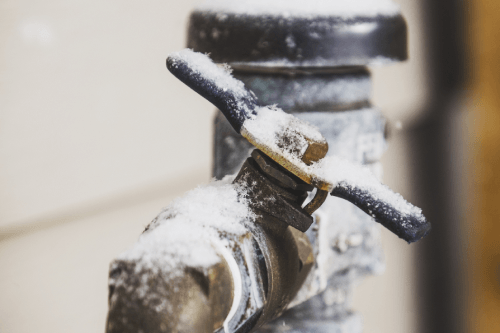Protecting Pipes from Freezing Issues: Key Tips
Protecting Pipes from Freezing Issues: Key Tips
Blog Article
We have discovered this article involving Prevent Frozen Pipes down the page on the net and reckoned it made sense to relate it with you on this site.

Cold weather can wreak havoc on your plumbing, particularly by freezing pipes. Here's how to avoid it from taking place and what to do if it does.
Intro
As temperatures decrease, the threat of frozen pipelines boosts, possibly resulting in expensive repairs and water damage. Recognizing how to stop icy pipes is essential for home owners in cold climates.
Avoidance Tips
Shielding vulnerable pipelines
Wrap pipelines in insulation sleeves or use heat tape to shield them from freezing temperatures. Concentrate on pipelines in unheated or exterior areas of the home.
Home heating strategies
Maintain interior rooms adequately warmed, especially areas with pipes. Open cupboard doors to permit warm air to distribute around pipelines under sinks.
Just how to identify frozen pipes
Try to find lowered water circulation from taps, unusual odors or noises from pipes, and visible frost on exposed pipes.
Long-Term Solutions
Structural changes
Take into consideration rerouting pipelines far from outside walls or unheated areas. Add added insulation to attic rooms, basements, and crawl spaces.
Updating insulation
Buy high-grade insulation for pipelines, attic rooms, and wall surfaces. Appropriate insulation helps keep constant temperature levels and lowers the risk of frozen pipes.
Protecting Outside Plumbing
Garden tubes and outside faucets
Separate and drain yard hose pipes prior to winter season. Mount frost-proof spigots or cover exterior faucets with protected caps.
Understanding Icy Pipelines
What causes pipes to ice up?
Pipelines freeze when subjected to temperatures below 32 ° F (0 ° C) for expanded periods. As water inside the pipes freezes, it broadens, taxing the pipeline wall surfaces and potentially causing them to rupture.
Threats and problems
Icy pipes can result in water system interruptions, residential or commercial property damage, and costly repair services. Burst pipes can flood homes and cause extensive structural damages.
Indicators of Frozen Pipes
Identifying icy pipelines early can avoid them from rupturing.
What to Do If Your Pipes Freeze
Immediate activities to take
If you presume frozen pipelines, keep taps available to alleviate stress as the ice thaws. Use a hairdryer or towels taken in hot water to thaw pipelines slowly.
Verdict
Stopping icy pipelines needs aggressive procedures and fast actions. By comprehending the reasons, indications, and preventive measures, home owners can secure their plumbing during winter.
5 Ways to Prevent Frozen Pipes
Drain Outdoor Faucets and Disconnect Hoses
First, close the shut-off valve that controls the flow of water in the pipe to your outdoor faucet. Then, head outside to disconnect and drain your hose and open the outdoor faucet to allow the water to completely drain out of the line. Turn off the faucet when done. Finally, head back to the shut-off valve and drain the remaining water inside the pipe into a bucket or container. Additionally, if you have a home irrigation system, you should consider hiring an expert to clear the system of water each year.
Insulate Pipes
One of the best and most cost-effective methods for preventing frozen water pipes is to wrap your pipes with insulation. This is especially important for areas in your home that aren’t exposed to heat, such as an attic. We suggest using foam sleeves, which can typically be found at your local hardware store.
Keep Heat Running at 65
Your pipes are located inside your walls, and the temperature there is much colder than the rest of the house. To prevent your pipes from freezing, The Insurance Information Institute suggests that you keep your home heated to at least 65 degrees, even when traveling. You may want to invest in smart devices that can keep an eye on the temperature in your home while you’re away.
Leave Water Dripping
Moving water — even a small trickle — can prevent ice from forming inside your pipes. When freezing temps are imminent, start a drip of water from all faucets that serve exposed pipes. Leaving a few faucets running will also help relieve pressure inside the pipes and help prevent a rupture if the water inside freezes.
Open Cupboard Doors
Warm your kitchen and bathroom pipes by opening cupboards and vanities. You should also leave your interior doors ajar to help warm air circulate evenly throughout your home.

I stumbled upon that post on Winter Plumbing Precautions: Preventing Frozen Pipes when browsing on the internet. For those who liked our blog posting kindly do not forget to pass it around. Thanks for being here. Please visit our website back soon.
Schedule A Service Report this page